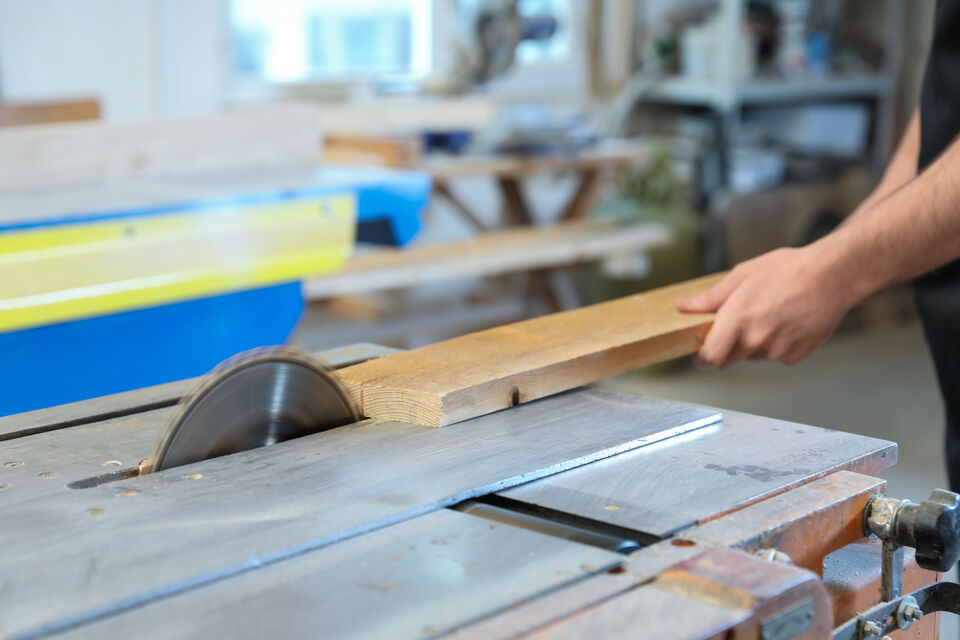Table saws are one of the most widely used woodworking machines. However, when not properly handled, they can lead to injury. Take precaution and consider the following tips for safe operation to protect yourself. Learn about basic operating steps, points of operation hazards, safety precautions, and how to avoid kickbacks when using table saws.
Basic Operating Steps
- Only use equipment you are trained and authorized to operate.
- When using hand-fed saws, adjust the height and angle of the blade.
- Hold the stock and push it into the blade.
- Use the guide to maintain a straight cut at the desired width.
- At the end of the cutting stroke, change the position of the stock or push it past the blade.
- Self-fed or power table saws are equipped with rollers or conveyor systems to hold the lumber and force-feed the stock into the rotating saw blade.
Point of Operation Hazards
- Injuries can occur if your hands slip while feeding the stock into the saw, or if you are holding your hand too close to the blade while cutting.
- Injuries can also result when removing scraps or finished pieces of stock from the table.
- If the saw is set up improperly, e.g., with the fence out of adjustment or the blade too high, the stock can either “kick back,” or your hand can be pulled toward the blade.
Additional Hazards
Injuries may occur if the operator makes contact with the blade or power transmission apparatus under the table.
- Always guard the portion of the blade below the table. Protect operators from possible contact with any parts under the table when the saw is in operation.
- Always make sure the power transmission apparatus (belts, pulleys, chains, sprockets, etc.) is guarded.
Kickbacks
Kickbacks occur when the blade catches the stock and throws it back toward the operator. They are more likely to occur when performing rip cuts, rather than crosscuts.
They can result when:
- The blade height is not correct.
- The blade is not maintained properly.
- Guards with anti-kickback devices or spreaders are not used or adjusted correctly, particularly when using wet or poor-quality lumber.
To avoid kickbacks:
- When ripping stock, use a spreader to prevent material from squeezing the saw or kicking back during the process.
- Use anti-kickback fingers to hold the stock down.
- Maintain the blade so that the teeth are in line with one another. The blade needs to be as close to perfectly flat as possible and needs to stay that way during the cut.
- Maintain the blades and sharpen blade teeth on a regular basis.
Safety Precautions
- Ensure that the saw components (blade, guard, arbor, fence, etc.) are adjusted correctly and the blade is sharp.
- Ensure that the blade is designed for the type of cutting being done and fits the saw's arbor precisely.
- Enclose the portion of the saw above the table with a self-adjusting guard that will adjust to the thickness of the material being cut and remain in contact with it.
- Ensure that anti-kickback and spreader devices are in place and adjusted correctly.
- Establish and follow lockout requirements for service or maintenance of the table saw.
- Wear the appropriate personal protective equipment (PPE).
- Use a push stick for small pieces of wood and for pushing stock past the blade.
- Keep your hand positioned on the fence as you are feeding stock.
- Do not reach over the blade.
Always read and follow the owner’s manual carefully.
NOTE: Always promote a discussion on any of the topics covered in the Tool Box Talks. Should any question arise that you cannot answer, don’t hesitate to contact your Employer.
